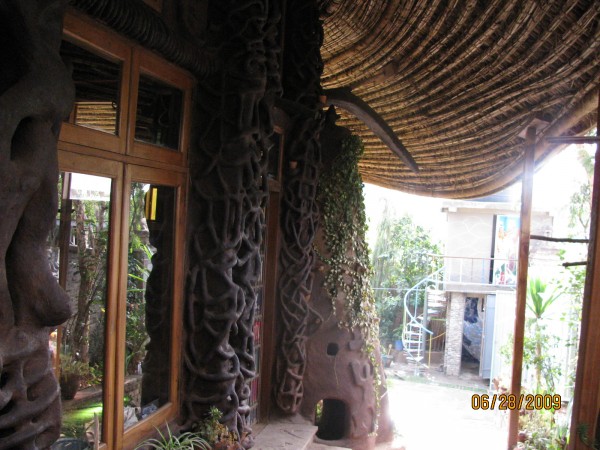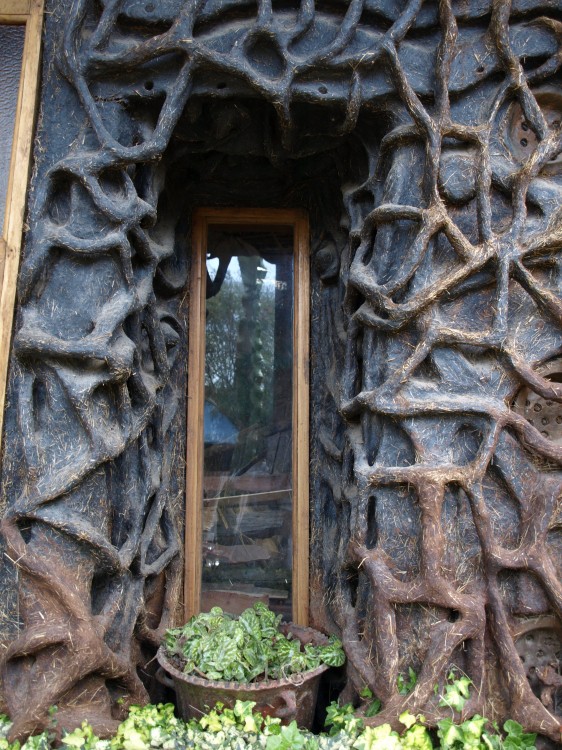What’s happening in Ethiopia?
Rebar asks the question: How do artists engage with the space of the museum? This question was on my mind on a return trip to Ethiopia Feb 9 – 22. What does such a question mean in Ethiopia? What does a “museum” mean in Ethiopia? Of course there are countless, countless Ethiopians who do not know there is such a thing as a museum. There are also many who know of the thing, but for whom such a place is irrelevant, and those people include individuals from every class of society, including Ethiopia’s leaders and its educated elite. In fact it is surely the latter who bear much of the responsibility for the sorry state of artistic display and preservation at Ethiopia’s National Museum in Addis Abeba.

The National Museum of Ethiopia, where one can see Ethiopian art, artifacts, and a facsmile of LUCY, the oldest hominid ever found.

Department of Inventory and Inspection of Cultural Heritage, a building that is kitty corner to the National Museum.

Typically displayed painting in the National Museum: wire to nail, hung in front of an empty vitrine.
The most exciting, interesting, and forward-looking thing happening in Ethiopian contemporary art is the ZOMA Contemporary Art Center (ZCAC), the brain and love-child of curator/anthropologist/artist Meskerem Assegued. 2010 is a particularly important year for ZCAC, as they’ve just inaugurated a permanent home in Addis, and are in the process of building an artist’s residency program and museum space in the tiny village of Harla, between Ethiopia’s eastern cities of Dire Dawa and Harer. The Addis ZCAC is also a residency space – equipped with living quarters for up to two visiting artists, studio space, and a spectacular communal space suitable for small performances or discussions. The residencies are open to artists from all over the world. The built space of Addis ZCAC is itself a kind of giant sculpture, the work of artist Elias Sime (whose solo show at Santa Monica Museum of Art in 2009 was a hit), who has spent the last 9 years conceiving and building it. Using traditional craft techniques and the tukul house form (circular shape; mud and straw walls; bamboo ceiling) and primarily recycled and reclaimed materials, Sime has created a truly magical space. All manner of supernatural occurrences will happen there, along with the making, showing, and discussing of culture by Ethiopian and visiting international artists. A hyena will appear on an interior balcony reciting Ghez poetry. The giant Gota grain container’s lid will rise up and out will float a genie to hover over the courtyard, not granting wishes but making them: May this space inspire. May this location — near an open drainage sewer, near the South African Embassy, near the teletubbies courrugated sheet metal mural, near the European Union Ambassador’s residence; in the center of a country where 80 languages are spoken; in a place rich with social, natural and cultural beauty; in a place impoverished by decades of abusive leaders and third world development politics — may this location, this contemporary art center unique in Africa, unique in the world, foster a new generation of Ethiopian and foreign artists, designers, thinkers, writers, creators and dreamers.



Comments (4)
Greetings Anne,
Thanks for the article, I found out about ZOMA in 2010 on the internet and was son intrique by it and the house that was built for it…. I am going to ET again this year and have a meeting with Meskereem the founder which I am so excited about. I am hopeful the ZOMA will have a most positive and fostering affect on the upcoming generation of young artists in Ethiopia !
Love the biomorphic, viny facade.
A wonderful post! I’m grateful that the National Museum is standing. The Dictator Mengisto murdered tens of thousands of intellectuals/students/artists and starved hundreds of thousands of innocent citizens; it’s a joy to read about a country that survived his insanity and is supportive of contemporary art.
Hopefully, the world will support these artists and not exploit them. Gracias Anne.
Hi Anne,
I really enjoyed this post. It was beautifully written and now I have a small sense of why your trip was so meaningful to you. I love the pictures of The Zoma Contemporary Art Center; I wish there were a whole city built of structures like this.
I do not think I even have your email address. I’ll ask Alice for it…
xs,
A